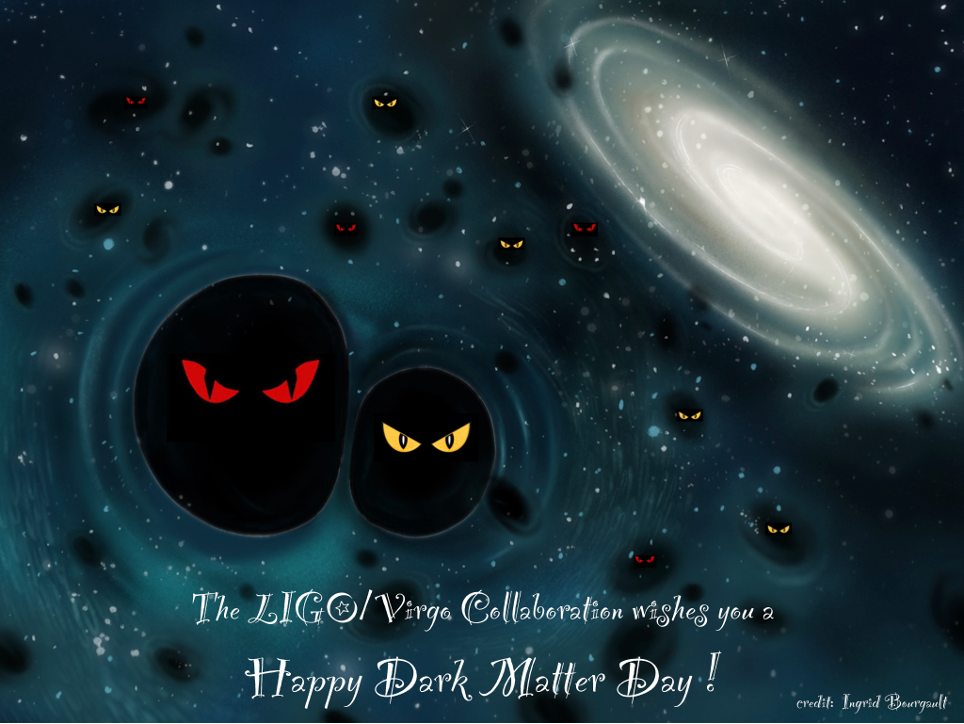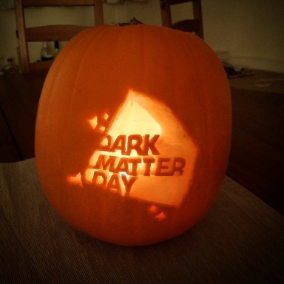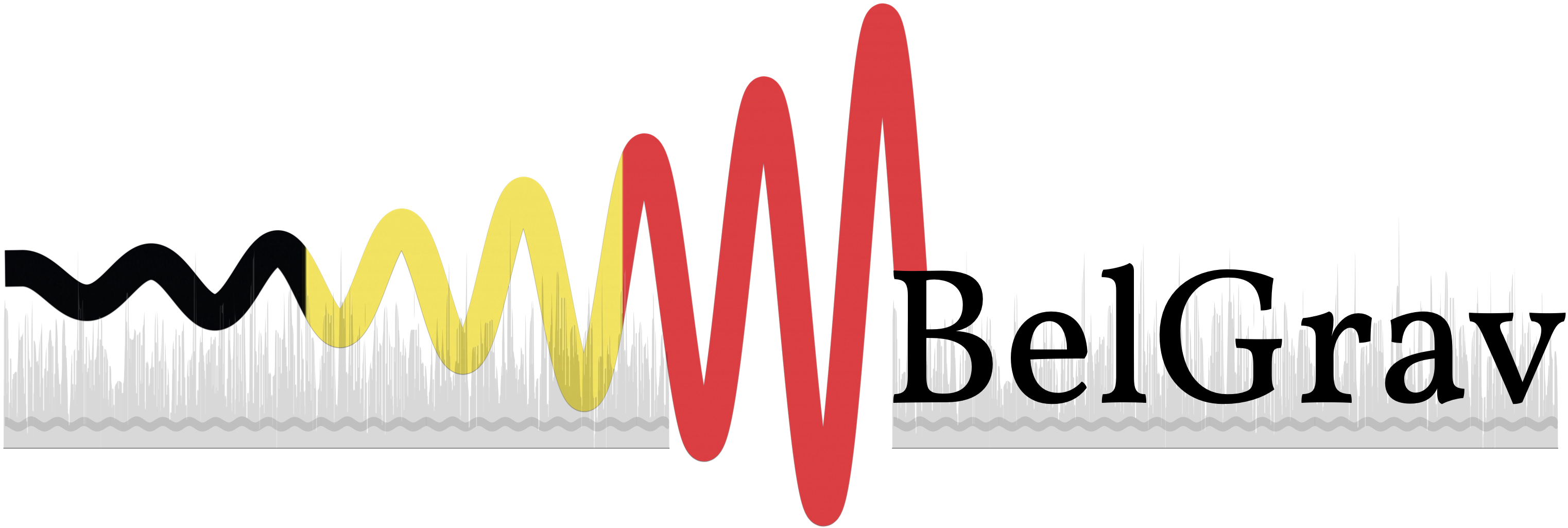
31st of October… while children dress up in their scariest costumes for Halloween Night, the astrophysicists of the LIGO/Virgo collaboration will celebrate Dark Matter Day.
At the same time, hundreds of millions of light years away, a couple of monsters will also celebrate the event and start an infernal waltz that can only lead to their merger. These monsters are black holes and their songs are gravitational waves – distortions in the fabric of space-time – shadowed by our astrophysics and their detectors, located in the United States and Italy. Just as children share candy and sweets at the end of Halloween Night, they have just released a new harvest of monsters, adding more than 100 creatures to their hunting bag. But could there be a link between these monsters and the ghostly Dark Matter, that has been rattling astrophysics for more than forty years?
Mysterious Dark Matter…
Ordinary matter is the one that makes up pumpkins, wizards and witches, their brooms, rocks, planets, stars and interstellar clouds… yet, ordinary matter only accounts for 15% of all the matter in the Universe. The remaining 85%, known as Dark Matter, is still a mysterious ingredient in the cauldron of the Universe. Like the Yeti in the Himalayan mountains, it still remains invisible to our telescopes and detectors. But its imprints are everywhere: it is roaming around each galaxy and prevents their stars from dispersing, it deviates light-rays from far-off galaxies, it guides the formation of the large-scale structures of the Universe, it has even left its imprints in the cosmic microwave background, the farthest and oldest photograph of the Universe, taken when it was only a few hundred thousands years old.
Black holes from the Big-Bang?
For some time, cosmologists have suspected that Dark Matter is made of a new ghostly particle, not or only weakly interacting with ordinary matter. But in the last few years, the absence of detection of such particles has rekindled other scenarios. One of them, thought to be in the broom cupboard, was revived from the ashes, following the first detection of gravitational waves by LIGO/Virgo, an accomplishment for which the 2017 Nobel Prize in Physics was awarded. Some unexpected properties (mass, low spin) of the observed black holes may suggest that these black holes were born from lumps in the hot and dense soup that filled the very early Universe, a fraction of a milli-second after the Big-Bang. This possibility was first envisaged in the 1970s by Yakov Zeldovich and Igor Novikov and later by Stephen Hawking, Bernard Carr and Georges Chapline. If they exist, such primordial black holes could explain part or even the totality of the Dark Matter. There is no doubt that the new harvest of black holes is going to feed the intense debate between supporters and detractors of this scenario…
Black holes… as particle detectors?
The extreme conditions found around black holes could also reveal the existence of new particles, called ultra-light bosons, another candidate for the Dark Matter in the Universe. Such new particles could be emitted by fast-spinning black holes, and becomes themselves the sources of gravitational waves of constant frequency, the tuning forks of the Universe. New particles or interactions could even act directly on the detectors, another way to probe the fundamental laws of physics.
For a long time, physicists have searched for signs of Dark Matter in particle detectors such as the Large Hadron Collider (LHC) at CERN, in Geneva, or with traditional telescopes. But the solution may come from black holes and gravitational waves. Astrophysicists involved in LIGO/Virgo hope so… in order to celebrate even more intensely the international day of Dark Matter!
Direct Detection of Dark Matter Interactions?
Dark Matter, in the form of Dark Photons, could be among us right now, and moving around 300 km/s! Despite their speeds, Dark Photons could cause extremely tiny oscillations of each part of LIGO/Virgo by interacting with the protons and neutrons in every atom in their paths. Another type of dark matter, called Dilatons, could also change the value of fundamental constants, such as the electron’s mass, and cause measurable changes in the size of objects in LIGO/Virgo! Dark matter is indeed really spooky and affects even us on earth!
Happy Dark Matter Day!

Contacts:
Sebastien Clesse, sebastien.clesse@ulb.ac.be (University of Brussels – ULB, Belgium)
Livia Conti, livia.conti@pd.infn.it (Istituto Nazionale di Fisica Nucleare – INFN Padova, Italy)
Jean-René Cudell, jr.cudell@uliege.be (Université de Liège, Belgium)
Andrew Miller, andrew.miller@uclouvain.be (Université catholique de Louvain – UCL, Belgium)
Kevin Turbang, kevin.turbang@vub.be (Vrije Universiteit Brussel – VUB, Belgium)
